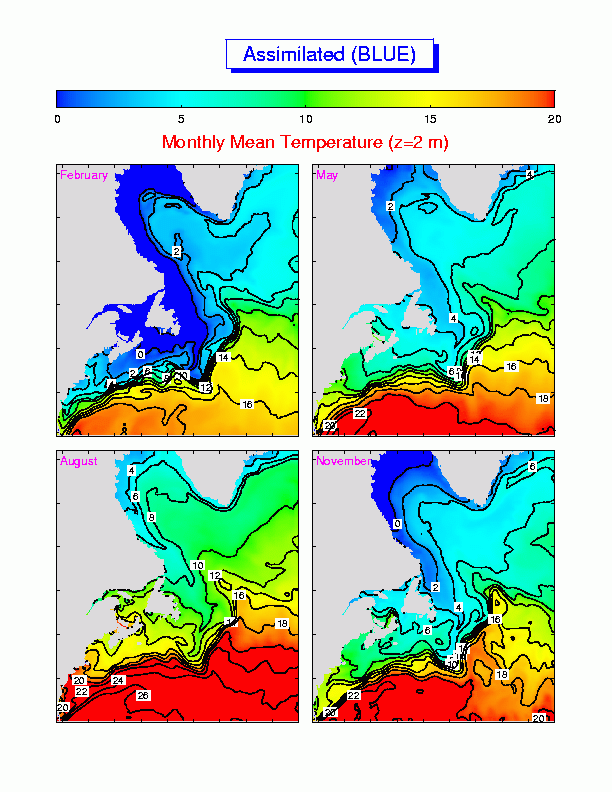
 We recently applied CANDIE to the northwest Atlantic Ocean forced by
monthly mean COADS surface wind stress and heat flux, and flows
through the model open boundaries. The model salinity at the sea
surface, and the temperature and salinity along the open boundaries,
are restored to the monthly mean climatology with a time scale of 15
days. The flow across the open boundaries is taken to be the
combination of a baroclinic component determined from density using
thermal wind, and a barotropic component determined from the
large-scale diagnostic calculation for the whole North Atlantic
produced by Greatbatch et al. [1991]. To improve the predictive skill
of the model, we proposed a semi-prognostic method by adjusting the
model predicted currents toward climatology, while leaving the model
temperature and salinity equations unconstrained. The adjustment is
accomplished by replacing the density term in the hydrostatic equation
with a linear combination of model-predicted and climatological
density. The model results produced using this method show a
significant improvement over those produced by either pure diagnostic
or pure prognostic model runs. The proposed method reproduces many well-known
circulation features in the region, including the Labrador Current,
the Gulf Stream and the North Atlantic Current. More significantly,
the method reproduces reasonably well the seasonal evolution of
temperature and salinity in the region, despite the fact the model
temperature and salinity equations are not constrained by the
assimilation procedure.
We recently applied CANDIE to the northwest Atlantic Ocean forced by
monthly mean COADS surface wind stress and heat flux, and flows
through the model open boundaries. The model salinity at the sea
surface, and the temperature and salinity along the open boundaries,
are restored to the monthly mean climatology with a time scale of 15
days. The flow across the open boundaries is taken to be the
combination of a baroclinic component determined from density using
thermal wind, and a barotropic component determined from the
large-scale diagnostic calculation for the whole North Atlantic
produced by Greatbatch et al. [1991]. To improve the predictive skill
of the model, we proposed a semi-prognostic method by adjusting the
model predicted currents toward climatology, while leaving the model
temperature and salinity equations unconstrained. The adjustment is
accomplished by replacing the density term in the hydrostatic equation
with a linear combination of model-predicted and climatological
density. The model results produced using this method show a
significant improvement over those produced by either pure diagnostic
or pure prognostic model runs. The proposed method reproduces many well-known
circulation features in the region, including the Labrador Current,
the Gulf Stream and the North Atlantic Current. More significantly,
the method reproduces reasonably well the seasonal evolution of
temperature and salinity in the region, despite the fact the model
temperature and salinity equations are not constrained by the
assimilation procedure.
For details, please click here to download the
ps-file of the paper.
Animation of the Seasonal Circulation in the Northwest Atlantic Ocean










